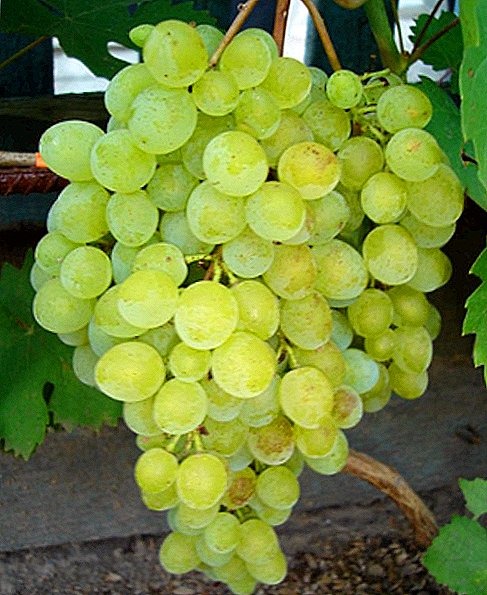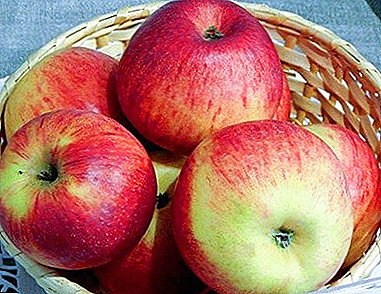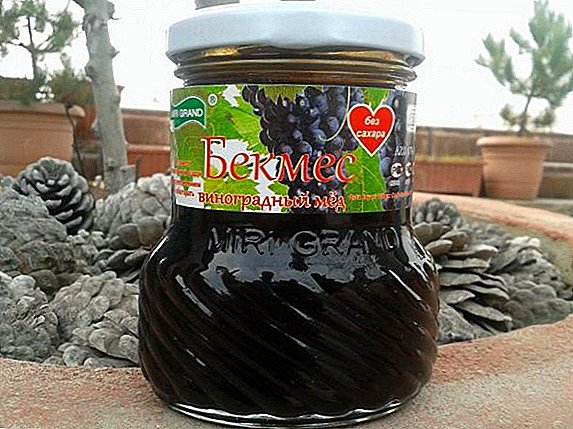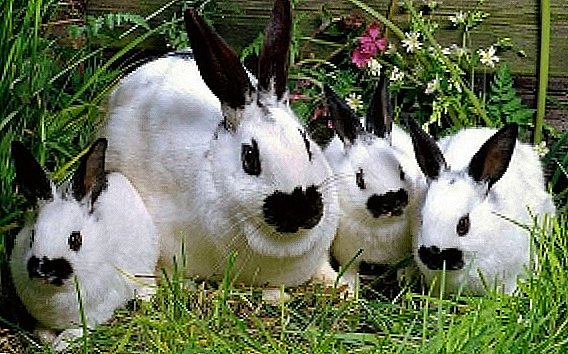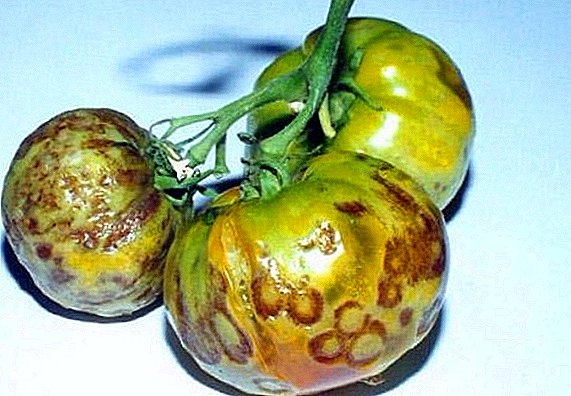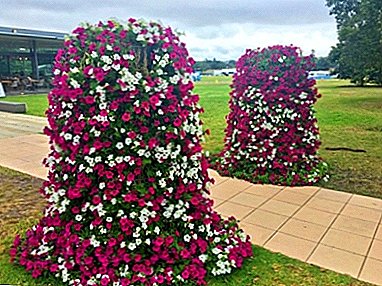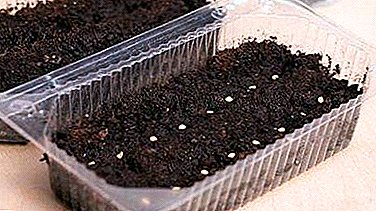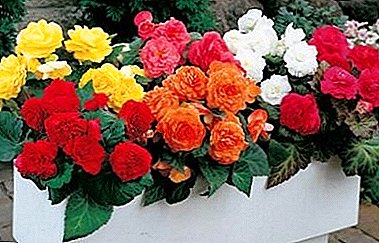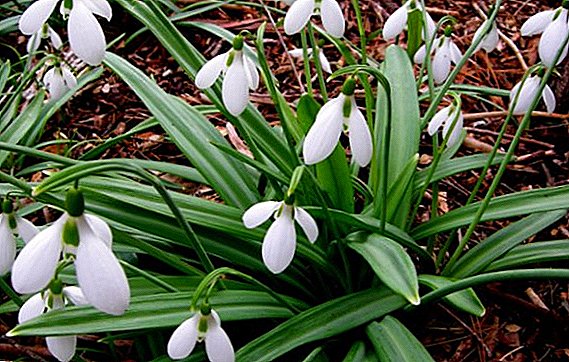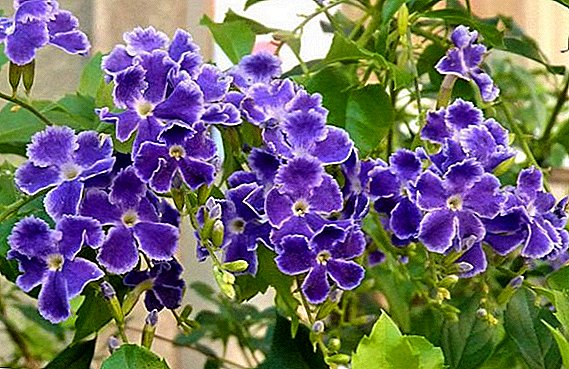 Durant is an ornamental plant that is grown because of the beautiful clusters of flowers whose colors vary from white to intense purple. The plant, which is easy to grow in pots, is ideal for decorating a patio or garden to give them a fun and colorful design. In this article we will learn how to grow a durant, how to multiply it, what pests and diseases threaten the plant.
Durant is an ornamental plant that is grown because of the beautiful clusters of flowers whose colors vary from white to intense purple. The plant, which is easy to grow in pots, is ideal for decorating a patio or garden to give them a fun and colorful design. In this article we will learn how to grow a durant, how to multiply it, what pests and diseases threaten the plant.
Botanical description of the plant
On the globe grow about 35 species of durant, some have the shape of a bush, others grow in the form of low trees. Durant, an evergreen from the tropics of Central America, belongs to the Verben family, and is a close relative of plants such as Verbena and Verbena officinalis. 
On average, the durant height is 1-2 m; it is a shrub with erect stems and long drooping inflorescences, densely covered with lanceolate leaves of light green color. The edges of the leaves are jagged. At the top of the stems appear dense inflorescences, consisting of beautiful, pleasant-smelling flowers, with pink, white, blue or purple petals with a white border. Fruits forming on the site of flowers after flowering is the yellow berries.
Duranta blooms from late May to late autumn. During the summer, this shrub is pruned several times to form a bush and enhance ornamentation.
The main types of durants
The main types of durant include the following:
- Duranta erecta - has bright green leaves and grows in the form of a large upright shrub or small tree. It blossoms with fragrant lilac flowers, which later turn into clusters of golden-yellow berries. Most varieties of this species have a dark blue strip in the center of each flower petal, but the color may differ in intensity. Some species of this shrub may have needles along the stems.
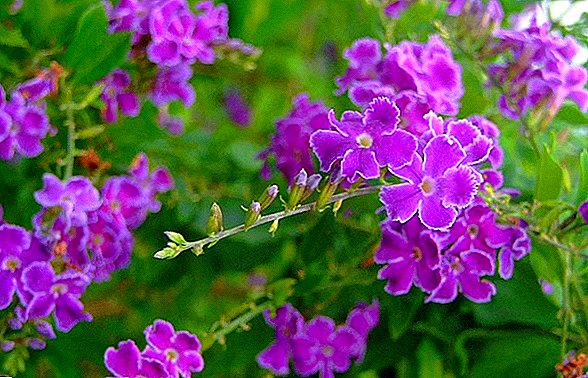
- Duranta plumieri - in its natural form, it is a small tree, up to 2.5 m high. The branches have four sides, the shape of long (up to 10 cm) leaves is elongated, ovate or oblong, with pointed tips. Petals of flowers are purple or blue, and the flowers themselves, clustered, are located at the ends of the branches. The tree blooms very beautifully, at the end of flowering yellow fruits, the size of a sweet cherry, are formed. Durant Plume has varieties that are suitable only for growing outside, they are distinguished by motley leaves and white flower petals.
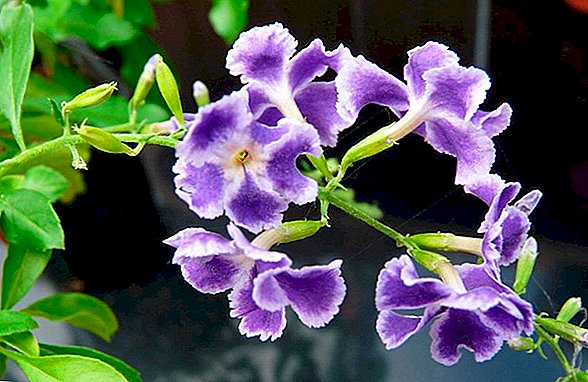
- Duranta lorentzii - bush up to 1.5 m high, has tetrahedral shoots covered with small oval leaves, the leaf surface is dense, leathery, the edges of the leaf plate have small teeth. With plenty of moisture and heat, it blooms beautifully and in small white flowers for a long time.
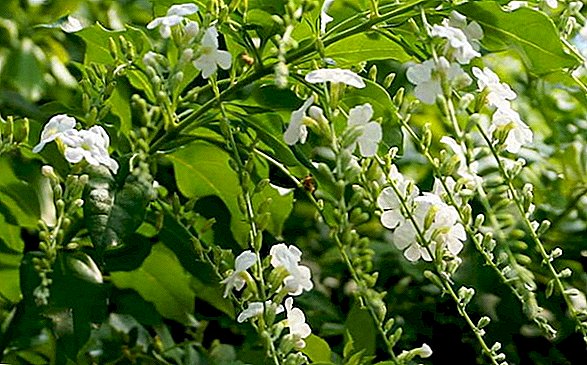
By crossing the main species, breeders created beautifully flowering hybrids with lush and unusually colored foliage.
Most popular hybrids:
- variegated - Tricolor and Variegate;
- with yellow-green foliage - Green and Gold;
- with vanilla smell of flowers - White Cayenne, Vanilla Bush;
- with beautiful purple flowers with white trim - Little geisha.
Conditions for growing at home
This perennial evergreen shrub prefers sunny or semi-shaded (in the heat) places. The tropical plant does not tolerate freezing winter temperatures, the minimum allowable temperature is + 14 ° C. In our country, the durant is recommended to grow in pots, so that after it becomes colder, a tropical sissy can be transferred to the room. It is recommended to do this around the end of October, before the cold can cause serious damage to the root system and leaves.
Location and lighting
Durant - extremely easy to grow perennial shrubs. The plant is absolutely not frost-resistant, afraid of any sub-zero temperatures. These shrubs bloom in well-drained, moist, fertile soils. In container growing, pots are filled with an air-permeable, well-fertilized soil mixture.
Important! Durant's upright shrub produces many fine spines that can injure the skin and eyes, and leaves in sensitive people cause dermatitis. Always wear safety glasses, long-sleeved clothing, and gloves when handling these plants.
Temperature conditions
At different times of the year, shrubs require different temperatures. The optimum summer temperature is + 20 ... + 22 ° C, the maximum allowable heat is + 25 ° C. Air temperature above these indicators leads to the fall of leaf cover. In order to avoid the loss of decorative shrubs before the onset of heat, the pots with plants are rearranged in partial shade.
In winter, the optimal temperature for durants is + 18… + 20 ° C, the minimum allowable decrease in temperature is + 14 ° C. The plant reacts painfully to sudden changes in temperature and has a positive attitude towards airing the room. These two factors need to be taken into account in the winter when the room is heated. You can not place pots with Dranta close to batteries and other sources of heating, cold drafts are undesirable.
Air humidity
This shrub comes from the tropics, and therefore requires high humidity. This moisture can be ensured by daily morning spraying of the aerial part of the plant from a spray bottle. Until the flowers bloom, all the leaves and branches are sprayed completely, after the beginning of flowering only leaves are moistened. 
Peculiarities of home care
Durant is a perennial shrub, and so that it does not lose its decorative effect over the years, it needs special care: proper watering, timely feeding and pruning.
Watering rules
Radical layer Durant in a pot watered year-round. Watering is carried out not too copiously, rather moderately, so as not to cause waterlogging of the soil, contributing to the development of root rot. It is impossible to water the bush with cold water, its temperature should not be lower than + 20 ... + 22 ° C. It is advisable to pre-water the water from the water supply for 2 days or boil it, which softens it. The best water for irrigation is rain or melt water. The land in the landing tank should always be slightly wet, but not wet.
Moisturize the soil in several ways:
- water under the root;
- humidify by adding water to the pan;
- arrange a wick irrigation in which one end of a wick wool wick is placed around the stem of the plant on the ground, and the other end is dipped into a container with water standing nearby.
Did you know? Durant is a toxic plant, because its leaves and fruits contain large amounts of saponin. If you chew a piece of paper or a fetus, at a minimum, there is an allergy on the body in the form of urticaria, in the worst case - you can get to the hospital with severe poisoning.
Top dressing
Durant is fed with complex mineral fertilizer for shrubs. There are two options for the dressing scheme: if the plant is grown in the fall and in the winter in a room with additional lighting - the fertilizer is carried out monthly, but if there is no light - feeding is stopped until spring.
In the cold period of the year without additional lighting should not be dressing, so as not to provoke a rapid growth of the above-ground mass in the absence of the necessary lighting, because it will lead to stretching of the branches and loss of decorative. In this case, it is better to leave the plant without supplements, but with moderate humidification of the root layer, until spring.
From spring to autumn, duranty feedings are carried out monthly. 
Pruning
Durant has a remarkable property to quickly increase the above-ground mass, so the bush after pruning quickly restores the beauty of the crown. Shrubs require regular pruning, with the help of this operation the bush is formed, which improves its appearance. In addition, pruning helps control the size of a not-so-small plant.
Pruning plants should be carried out in such a time that in the future it does not affect the ability of the plant to summer flowering. When pruning you need to observe symmetry so that the tree does not look one-sided.
With the arrival of spring shrub blossoms, so the branches can be cut only at the right time of year so that the plants do not interrupt their normal flowering cycle. The end of winter is the best time for pruning, but the operation can also be carried out in early spring, until the buds on the branches have swelled. It is advisable to avoid pruning at the end of summer or autumn, this may cause a surge in new growth of branches that do not have time to mature before the onset of cold weather.
Important! The only type of pruning that can be performed as needed throughout the year is to remove faded flowers so as not to reduce the decorativeness of the bush and reduce the likelihood of self-seeding.
How to properly cut the durant:
- Pruned the plant so that in the end the bush has acquired the necessary height and width.
- When pruning, remove any unwanted growth from the side stepsons or side branches.
- Cut out all crossed branches growing inside the crown.
- Remove any dead or damaged branches. Diseased branches are removed so that only healthy and clean wood remains on the cut. After removal of diseased branches, the cutting tool is disinfected so as not to transfer pests or viruses from diseased branches to healthy ones.
- When all the extra branches are removed, they carry out the final pruning, in which the tip of each growing branch (large and small) is cut by 1-3 cm. Two new escapes will soon grow at the cut-off point, which will increase the pomp of the bush.

How to avoid the spread of viral infections in the bush:
- Scissors or pruners before cutting should be carefully sharpened so that the edges of the branches are cut with minimal tissue tear.
- Before working, the instrument should be washed in warm soapy water to remove dirt, and then soak the instrument in a disinfectant solution, which is made from 1 part of “Whiteness” bleach and 3 parts of water, as well as vodka and water (1: 1) as a disinfectant liquid .
- Scissors for trimming branches soaked in disinfectant for 5 minutes, then washed under running water.
Read also how to choose indoor flowers that do not require special care.
Transfer
During the first 5 years of life, the shrub quickly develops and builds up roots and aerial mass. If the branches and leaves undergo regular pruning, the roots eventually cease to fit in the pot, so for the first 5 years the young durant is transplanted annually, and later transplanted as needed. Transplantation is carried out in early spring (beginning or end of March), long before the kidneys swell.
How to properly transplant plants:
- Planting tanks can be made of various materials: glass, clay, plastic or ceramics. The size of the pot is chosen so that it is 1-1.5 liters larger in volume than the previous one. At the bottom of the pot must necessarily be one or more holes for the drain of excess moisture. It is desirable that the pot was equipped with a tray. Before pouring the soil into the planting tank, drainage from branches, expanded clay, or fragments of foam plastic is placed there.
- Soil mixture for cultivation can be purchased in garden centers under the label "For flowering houseplants." You can also mix the soil with his own hands. To prepare the soil mixture, it is necessary to take 2 parts of the ground from under the birch and 1 part of humus, peat powder, soddy soil, white river sand.
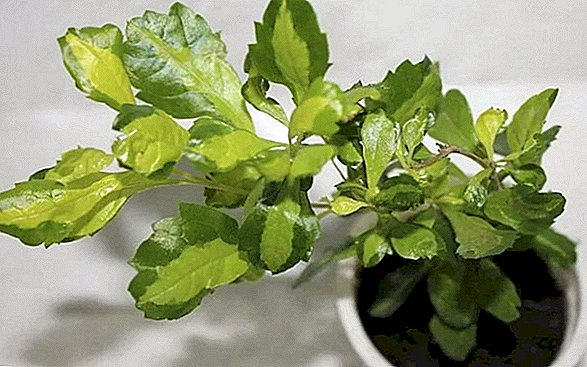
- Before removing the earthen clod with its roots from an old pot, its walls rattle slightly from the outside. This will help separate the earthen clod from the walls of the pot. Next, the florist with one hand holds the plant behind the stem at the border with the soil, and the other removes the old pot from the roots.
- After extraction from the roots of the shrub shake off the old soil, if necessary, the roots are shortened a little. The shrub is placed in the middle of a new pot filled with less than half of the fresh substrate, and sprinkled with soil so that 1-2 cm of the height of the landing container remains free. It is necessary for the convenience of watering. The transplanted flower is well watered.
- At the age of 5 years, the Durant does not need frequent transplants, but every year in the pot you need to change the top layer of the planting substrate and add fresh, fertile soil to the previous level.
Rest period
If in winter the florist cannot provide the durant with suitable temperature and lighting, then it is best to send the plant to a resting phase. This means that the temperature in the room where the flower is located should be lowered to + 14 ... + 16 ° C, and the soil moisture should be reduced to the minimum. During the rest period, the soil should remain slightly damp, but excessive moisture will lead to the development of root rot or mold on the soil, as the room is rather cool. Around mid-February, the plant begins to withdraw from the resting phase: take the pot into a warm, well-lit room and carry out dressing.
Breeding
Durant can be propagated by cutting the branches and sowing seeds. The second method is a rather time-consuming procedure, so growing durant from seeds is justified only when they want to propagate a particularly valuable variety or to obtain a virus-free planting material.
Important! Beautiful reddish fruit is decorative, but very toxic, so they need to be cut at a height of up to 1.5 m, especially from bushes growing near children's playgrounds or areas for walking pets.
Cuttings
Vegetative reproduction through cutting is the easiest and fastest way to grow plants.
Basic rules for grafting:
- Cut cuttings from January to March or from August to September. For cuttings, well-ripened but not yet woody shoots are selected, using a well-sharpened knife or sharp-edged garden shears for cutting. On each handle should be at least 3 pairs of leaves. To reduce evaporation, remove flowers, buds and part of the leaves, cut off half of the leaf blade from large leaves.
- Small peat pots are suitable for growing cuttings. The soil is taken light, with low nutrient content, so the soil is mixed with perlite or sand. When planting it is necessary to pay attention to where the top and bottom of the cutting. The lower part is buried in the ground for 2-3 buds.
- After planting, the cuttings are well watered and set in a lighted, warm place, but not under direct sunlight. For example, the southern window for growing cuttings is not suitable. On top of the planting pots, they stretch transparent plastic bags in order to prevent the evaporation of moisture from the ground.

- About 3-4 weeks later, roots are formed in the cuttings. As needed, the soil in the pots is moistened, and young plants also need light, air, and enough space for growth.
- The soil in which the cuttings are planted will provide young durant with nutrients for 4-6 weeks. After this, the cuttings need to be fed with liquid mineral fertilizer (2 g per 1 l of water) or granular fertilizers with slow release can be used.
- After 2 months on the rooted cuttings carry out the first pruning with the removal of the central stem. Pruning is needed for forming compact bushes. This procedure is done when the height of the central trunk reaches the desired level. To shape the future lush crown of the durant, the tips of the side branches are also pinched.
Did you know? In countries with a mild climate where there is no frost, durant shrubs are grown as hedges. Such living fences are impassable for people and animals, moreover, they are easy to give a beautiful square or rounded shape with the help of garden scissors.
Seeds
Growing a durant through sowing seeds is quite a laborious process, and for its successful completion it is necessary to follow the rules of sowing and further care:
- The seeds are extracted from the orange fruit Durant, well washed from the pulp and soaked overnight in a growth stimulator ("Emistim", "Zircon", "Heteroauxin"). Before sowing, the seeds are dried to flowability.
- A wide planting capacity of 5–10 cm in depth will be suitable for cultivation. The soil is the same as for the cultivation of cuttings: permeable to water and air, with the addition of perlite or sand.
- The substrate is poured into a container, level the surface of the soil, slightly compacted and well moistened. On the surface of the wet substrate make grooves for sowing seeds, the depth of the furrow is from 3 to 5 mm.
- According to prepared planting furrows, seeds are sown (as seldom as possible), the seeds of the durant and the crops are filled up with the substrate. Over the landing container they stretch a plastic film or lay a transparent glass to create greenhouse conditions.
- Boxes with crops establish on a window sill in the warm room, optimum temperature for cultivation - + 25 ° C. The first shoots can be expected in 50-60 days after sowing.
- Further care of the seedlings consists in moistening the soil as needed, airing the crops, picking on individual pots at the age of 3-4 months when 2-3 pairs of real leaves appear on the seedlings.
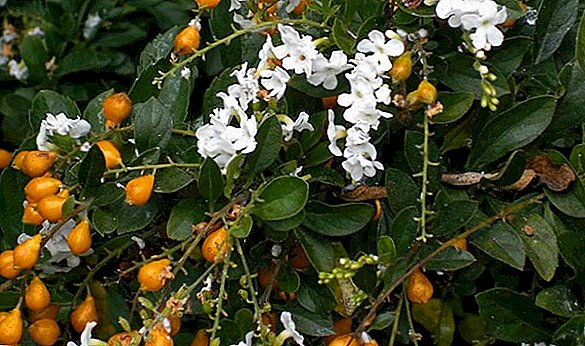
Diseases and pests
The most common pests are durants:
- Spider mites. Insects feed on leaf cells, releasing saliva that is harmful to the plant. Pests are seen as small bright spots on the leaves on which they live. Damage to the leaves look like black necrotic spots on a green background. Spider mite braids thin web of stems and leaves. The presence of the parasite on the plant leads to the death of the leaves. The pest can be a carrier of viruses that are dangerous to the shrub. At high humidity and low temperature, spider mites can infect plants in pots all year round. They feel most comfortable in the winter, with warm and humid indoor air.
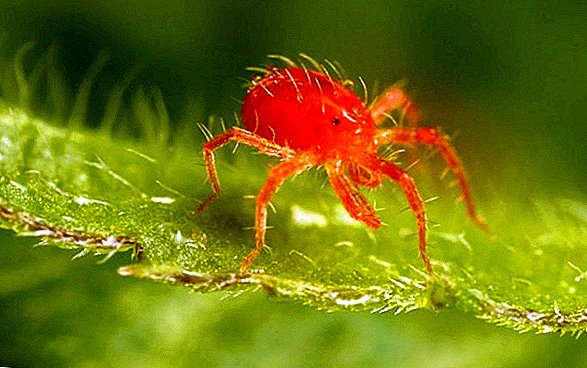
- Aphid. A tiny pest (up to 0.5 mm) with green, black, gray or white color of chitin. Lives in symbiosis with ants that bring small insects to plants. It multiplies rapidly, lives in large colonies, feeds on sap and plant cells. After the aphid has been destroyed, the florist must also deal with the destruction of ants. If this is not done, in a week the ants will again carry the aphids on the bush.
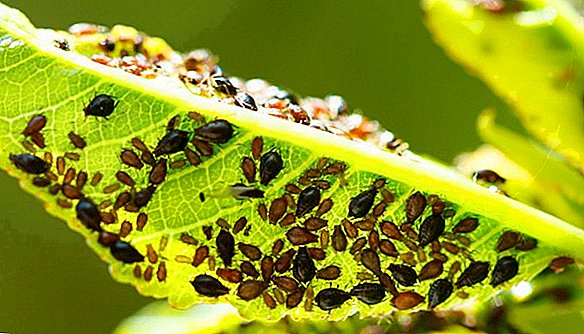
Treatments for spider mites and aphids are identical. Before using chemicals to destroy them, you can try to get rid of parasites using biologically pure methods. It is necessary to take the pot with the plant under the shower and wash off the pests with slightly warm water under pressure. Before the "bath" procedures, the soil in the pot is better covered with polyethylene, protecting it from leaching. If water treatments do not help, apply shrub treatment with insecticides ("Aktara", "Inta-vir", "Karate", "Aktellik").
Durant is highly resistant to fungal and viral diseases. With excessive watering and no drainage at the bottom of the pot may occur root rot. In this case, the bush must be removed from the pot, shake off the old soil and after examining the root system, cut out the rotten fragments of the roots. The cut sites are covered with wood ash, after which the plant is transplanted into a new substrate. Drainage must be laid on the bottom of the pot before transplanting, in order not to create conditions for the development of root rot.
Did you know? In the warm climate of Australia, the fast-growing Durant is recognized as an invasive plant, simply - weed Birds, feeding on its fruits, spread the seeds throughout the continent.
Difficulties in growing
Durant is not too whimsical shrub, but still the florist should adhere to the basic requirements for growing conditions and pay attention to the signals that the plant gives:
- roots appear on the ground surface - This is a signal of the need for a transfer to a larger landing capacity;
- yellow and showered leaves - reports the presence of pests or nutrient requirements;
- mold in the soil - evidence of excessive watering;
- elongated and sparse branches - catastrophic lack of light.










